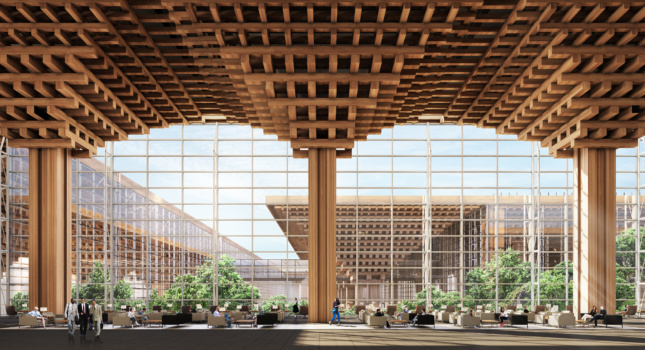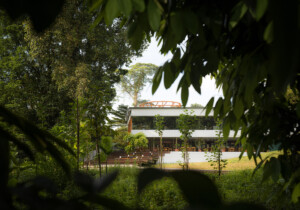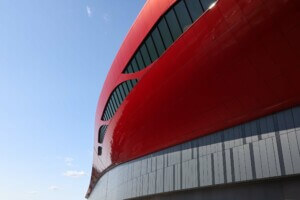The CEO of Qatar Airways accused the country of Singapore and Israeli-Canadian architect Moshe Safdie of plagiarizing the design of the recently-opened Jewel Changi Airport, likening it to a planned-airport expansion project in Doha.
At a recent press briefing, Akbar Al Baker, the head of the international airline, alleged that “somebody” had copied Qatar’s scheme for enhancements at the Hamad International Airport (DOH) located south of Doha. He didn’t name Singapore or Safdie in his announcement but, the criticism was clear: Work done ahead of the 2022 FIFA World Cup will include the build-out of a large waterfall and interior garden like those found at the wildly-popular new shopping palace in Changi.
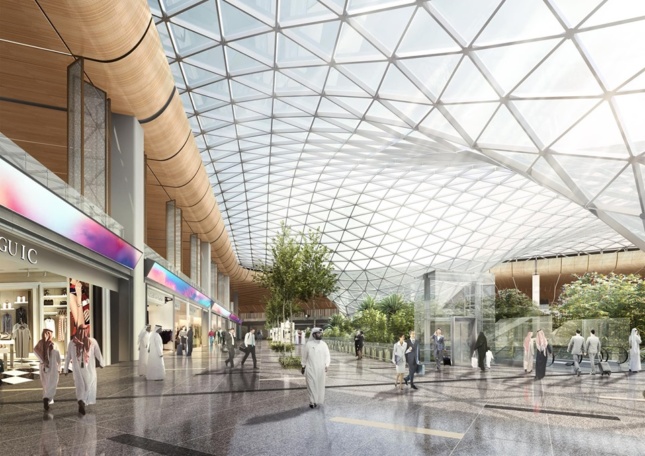
Completed in April, the $1.25 billion entertainment and retail complex boasts the world’s tallest indoor waterfall, spanning seven stories across the 1.4-million-square-feet structure. Safdie Architects designed the eye-catching space as a landside, nature-themed amenity hub for the airport. Thousands of plants and 2,000 trees populate the interior.
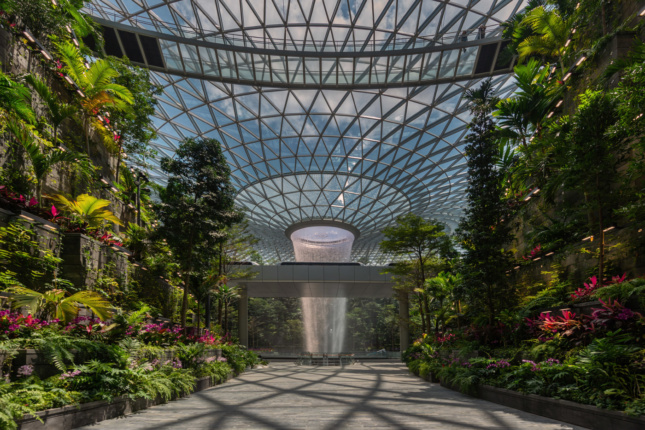
Singapore’s English-language daily newspaper, The Straits Times, reported that Safdie’s concept was initially created exclusively for Changi Airport Group, the airport’s operator and manager, back in 2013 and therefore couldn’t be a copy of the 2019 Doha project. Safdie issued the following statement to the paper:
“We have been pursuing the concept of gardens as a focal point for the public realm for many decades. We have also explored the concept of harvesting the rain into internal rainfalls at Ben Gurion Airport (Israel) and Marina Bay Sands. The success of these explorations have further inspired and led us to create a new icon in the Jewel that we see today—a new kind of urban place that celebrates the elements of nature and urban life. We are delighted that Jewel’s uniqueness and originality has been well-recognized by the international community and resulted in many wanting to emulate it.”
This isn’t the first time a piece of airport infrastructure has been the center of plagiarism accusations. Hamad International Airport itself, which opened to the public in 2014, was first criticized for looking too much like the Ben Guiron Airport in Israel. Located between Jerusalem and Tel Aviv, the airport’s Terminal 3 expansion (its international gate) was designed and completed in 2004 by Safdie and Skidmore, Owings & Merill. Last year, Thai architecture practice DBALP Consortium was accused of copying a Kengo Kuma project in its winning competition design for a new terminal in Bangkok.
